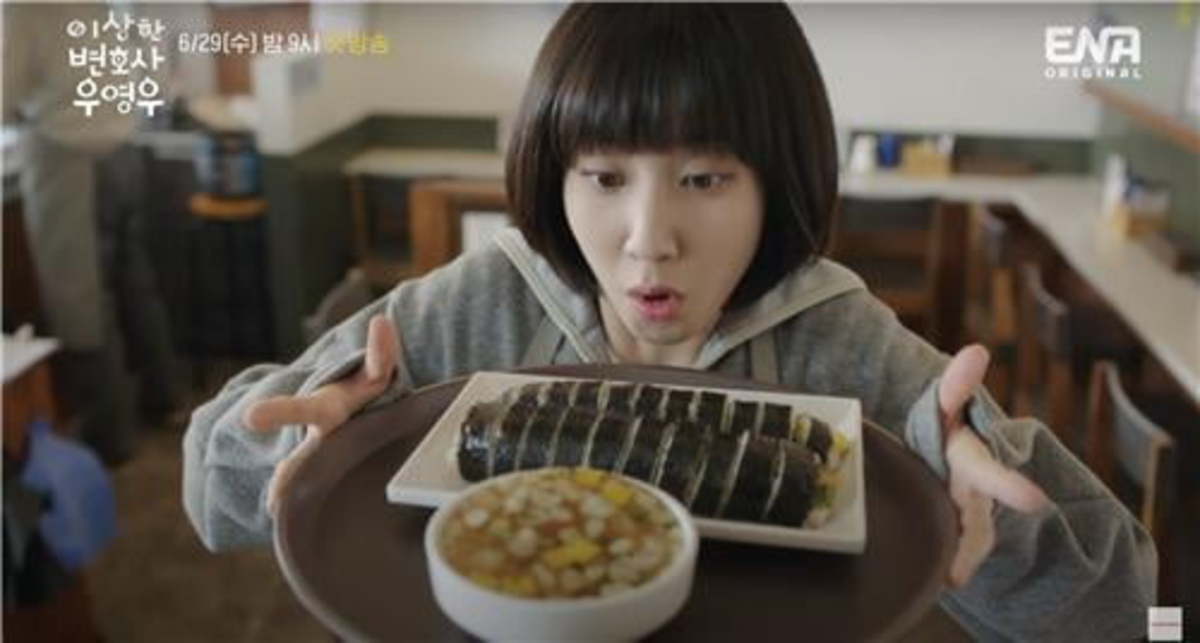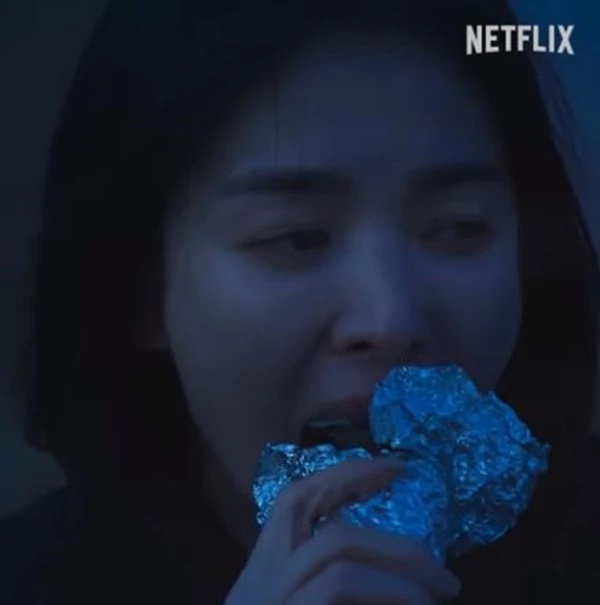
Woo Young-woo, the protagonist of Netflix`s “Extraordinary Attorney Woo,” eats gimbap made by her father. (Netflix)
If you’re a fan of Korean dramas, you would be no stranger to gimbap.
The seaweed rice roll, usually filled with various ingredients, are akin to sandwiches in the West. It is easy to get, inexpensive and good for breakfast, lunch or dinner. It is the ultimate meal on the go.
Recently in K-dramas, this versatile dish has taken on different meanings.
In Netflix’s hit drama “The Glory,” protagonist Moon Dong-eun, played by actor Song Hye-kyo, eats gimbap whenever she can squeeze in the time to eat. The character is so consumed with revenge against the bullies who ruined her life in high school that food only plays an instrumental role in her life as a means of survival.
In another Netflix drama, “Extraordinary Attorney Woo,” the protagonist eats gimbap for a different reason. The dish works as a metaphor for the young autistic lawyer Woo Young-woo’s childlike innocence.
Poverty, innocence and love
Gimbap has a significant meaning in Moon’s life in “The Glory.”
The dish brings back bitter memories of her past pain. Yet, it is what she keeps eating to be reminded of her desire for revenge. It is also a metaphor for her solitude and loss of joy in life, as she has no friends to dine with and no interest in eating, other than as a means of survival.
A victim of school bullying, Moon got kicked out of school unfairly and had to work at a gimbap restaurant, rolling and slicing gimbap rolls. It’s where students would come after school for snacks, reminding her of a life that was brutally taken away.
Gimbap continues to have a presence in her adult life. In episode two, Moon munches on a roll after she leaves the house of a student she had been tutoring who had been sexually harassing her all along. Before she finishes the roll, she faints and is taken to the hospital where doctors say she is suffering from malnourishment.
Korean poet and educator Lee Jae-moo describes gimbap via a poem he posted on his Facebook in 2017.

Moon Dong-eun, the protagonist of Netflix`s “The Glory,” eats a roll of gimbap. (Netflix)
“Gimbap is a meal that you pick when you have to eat in a hurry. / It is a meal for those that desire for a home of their own on Earth rather than entering heaven. / It is a meal that is dark like a tunnel and can make you choke while eating.”
Meanwhile, Woo in “Extraordinary Attorney Woo” describes gimbap as a “reliable” food. She describes the dish as such because all the ingredients are visible on the surface at a glance. It is used as a tool to describe her autism, sticking to very precise routines in familiar environments and avoiding changes.
Woo’s gimbap is prepared daily by her father who owns a gimbap restaurant. It is a medium of care and love he has for his only daughter.
“Gimbap gives the impression that it is easy to make, but it is actually a very fickle dish,” according to a study published last year by the state-affiliated Korean Food Promotion Institute.
“It is difficult to roll the gimbap, as it could be easily ruined in the process and it is also hard to preserve the taste. It is a food that is often portrayed in Korean dramas and movies to represent the love characters have for each other.”
Big Mac Index? Gimbap Index
The Big Mac Index is often used as a gauge to measure the purchasing power parity between two currencies and inflation between countries.
Koreans, on the other hand, get a general sense of inflation levels from the price of a roll of gimbap sold at local eateries.
When the nation’s largest gimbap franchise Gimbap Heaven first opened in the mid-’90s, a roll -- usually serving one person -- cost around 1,000 won (81 cents) each.
Now the price of the basic, cheapest gimbap stands at 2,500-3,000 won per roll, with the market becoming dominated by “specialty gimbaps” filled with delicacies that can cost up to 10,000 won per roll.
“The price of eating outside for Koreans is likely to rise with the rise of raw material prices and inflation,” said Lee Eun-hee, a consumer science professor at Inha University.







![[Graphic News] More Koreans say they plan long-distance trips this year](http://res.heraldm.com/phpwas/restmb_idxmake.php?idx=645&simg=/content/image/2024/04/17/20240417050828_0.gif&u=)